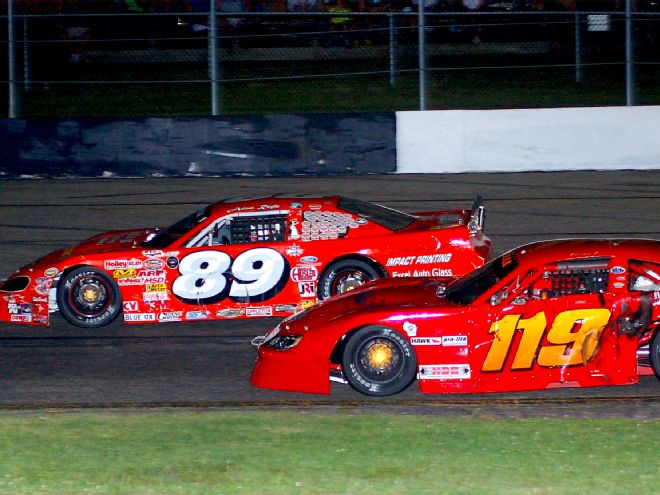
If you run a series that allows sealed crate motors, then most likely you will have to meet the rules specific to that series. Many series and tracks allow sealed motors with the factory seals installed either by the factory or by a certified engine builder who is delegated by the series or track to rebuild and/or inspect the motor for compliance.
We (Circle Track) own a GM 604 crate motor and we needed to get it certified for the TUNDRA Super Late Model series that runs at racetracks in Wisconsin. Our longtime test pilot, Dalton Zehr, runs this series and has a backup car that will be used for R&D for various parts and configurations that we will be reporting on in CT.
So, we hauled the 604 motor from Florida up to Wisconsin and took it to Wegner Motorsports for inspection, certification, sealing, and a run on their dyno. This process ensures that when a motor is introduced into a series like TUNDRA, it is as the rules require, completely stock with factory parts only, and more importantly, puts out a defined power level.
The TUNDRA series, which stands for The Unified Northern Drivers Racing Association, is really a model for the industry. The drivers who raced at Dells Raceway Park in 2011 decided to take matters into their own hands and organized the series in order to have a chance to race at Dells since the then-owner dropped Late Model racing from the program.
The two promoters of the series are Tom Litchfeld and Frank Kreyer. Their goal is to build a series where race teams can come and compete with different motors on a more equal basis. They want to make Late Model racing more affordable and by designing an equalization process, the racers wouldn’t need to go out and buy new or different engines just to satisfy the series rules.
The series grew over the years to now include six Wisconsin racetracks for six races. The car count is upwards of 30 and more per event and the fan interest is very high due to the high caliber of race teams who compete. So, here we are, having our in-house motor going through the inspection and certification process that will allow us to run the car in this series.
The process is very simple. We take the motor to Wegner Motorsports and run it on their engine dyno to record the horsepower and torque peaks. The rule as it now stands, is to add the peak horsepower to the peak torque numbers, divide by two to arrive at a Power Number (PN). The PN is then compared to a standard PN for say a 400hp engine. The difference in the PN, if your motor is more, is the amount of weight you have to add to your car in order to be able to compete in the series with a higher horsepower motor. And, if your motor is less, you can subtract weight from the specified normal weight.
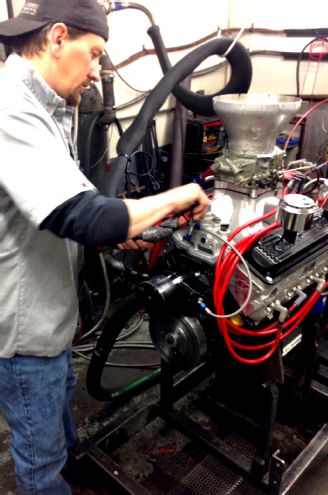 We needed to certify our GM 604 sealed crate motor for the series and we took it to Wegner Motorsports to run on the dyno and certify the horsepower and torque values. Those are used to create a Power Number (PN) that can be used to determine how to equalize the differences in power between different motors.
We needed to certify our GM 604 sealed crate motor for the series and we took it to Wegner Motorsports to run on the dyno and certify the horsepower and torque values. Those are used to create a Power Number (PN) that can be used to determine how to equalize the differences in power between different motors.
There is, however, a problem with this approach that the organizers are well aware of. A lighter car will go through the turns quicker, and a higher-horsepower motor will accelerate a car faster down the straights. So, let’s examine this from a purely horsepower perspective.
If I have a 450 PN engine I plan on running against a 400 PN engine, then I will need to add 50 pounds of weight to the car. The gain in power is 12.5 percent, but the gain in weight is only 1.8 percent. I gain much more power percentage wise than I gained weight, and power to weight ratio is what acceleration is all about.
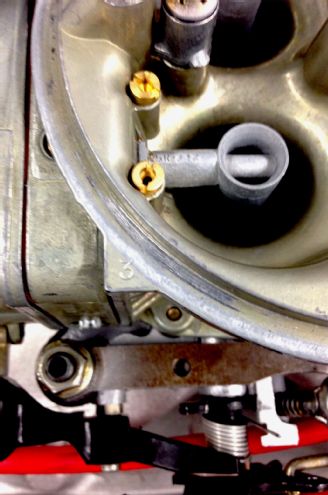
The question is, if I run the 400 PN motor, are my gains through the turns enough to overcome the power advantage of the 450 PN engine? Only testing will tell, but there is a problem with this approach. Vast differences in speed anywhere on the track can cause problems and potential collisions.
If the 400 PN car were behind the 450 PN car, it would run up on it through the turns and on the straights, the 450 PN car would run up on the 400 PN car at the end of the straights. There must be a better plan that would be easier to implement. And I think there might be.
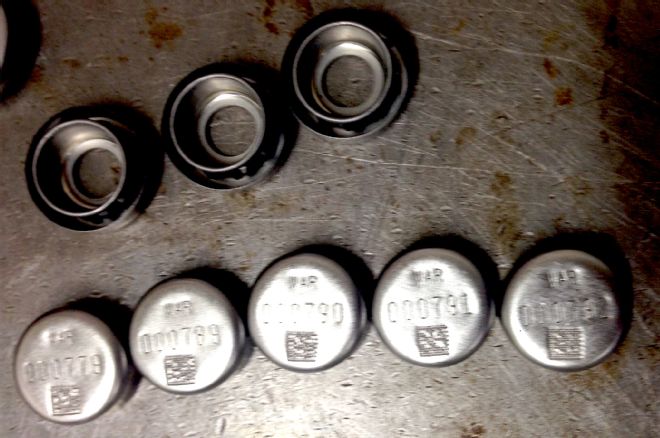 Once the PN is established, the factory seals are removed and the series seals are installed. The serial numbers are recorded and kept on file for this motor to be checked once it enters competition.
Once the PN is established, the factory seals are removed and the series seals are installed. The serial numbers are recorded and kept on file for this motor to be checked once it enters competition.
What if we eliminate the turn speed difference by having all cars weigh the same amount? This would eliminate the turn speed difference and eliminate the problems associated with the differential in speeds unequal weight would cause. But, we still need to equalize the cars based on the difference in PNs.
What if we assign different gear ratios based on PN differences. Let’s say that a particular rear gear ratio were correct for a GM 604 crate motor putting out 400 hp to achieve 6,400 rpm at the end of the straight. If we then wanted to equalize the acceleration between the 400 PN car and the 450 PN car, we could take gear away from the 450 PN car till the acceleration was nearly the same between cars.
This approach would allow equal minimum vehicle weight while adjusting for cars with engines with higher PNs to compete on a more equal basis all of the way around the track.
Testing could help determine how much gear points are appropriate to compensate for X number of PN difference for three scenarios, a quarter-mile, a third-mile, and a half-mile track. Then, the only tech would be to make sure a motor has been certified as to the PN value and that the designated gear ration was installed for the race. Now we’re talking.
I spoke at length with Frank Kreyer, an easy thing to do if any of you know Frank, and I now fully understand his and Tom’s vision and goals. They want racing to survive and the only way to do that is to provide a cheaper way to go racing.
Cheaper doesn’t necessarily mean buying cheaper motors, but that is one of the ways. It also means being able to run what you have already purchased, no matter the cost, so that you don’t need to go out and spend more money.
The series has become very popular in this region and the races attract well in excess of 30 entries per race. Those numbers speak for themselves. It is rare today to see more than 10 or 15 Late Models at most tracks across the country. I know because I have completed a Tour of the entire U.S. and I can count.
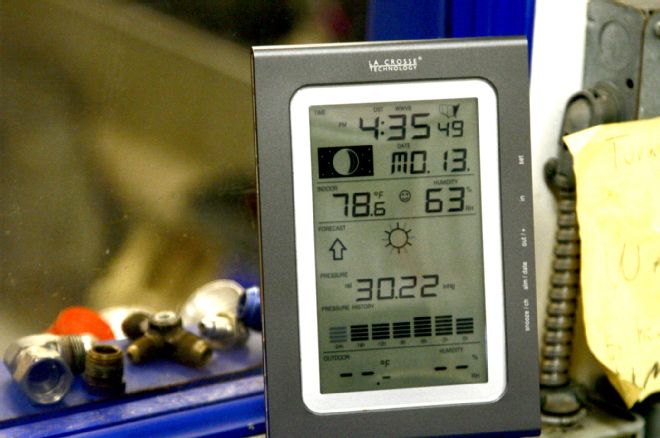 The series now used only one dyno to certify the PN and that is the one at Wegner. Since the dyno output values can be manipulated by entering temperature, humidity, and barometric pressure, the series promoters decided that in order to keep things equal, all motors would be dyno’d on the same dyno.
The series now used only one dyno to certify the PN and that is the one at Wegner. Since the dyno output values can be manipulated by entering temperature, humidity, and barometric pressure, the series promoters decided that in order to keep things equal, all motors would be dyno’d on the same dyno.
As for the GM 604 crate motor, Frank told me that of the many race motors he owns, one is a 604 that he has run in a total of 84 races and it is still running well and is still competitive on the shorter tracks. At twentysomething races per year for the average racer, that’s three years of racing without having to put any money into the motor.
There are, according to Frank, two things that stand out where the TUNDRA series gains popularity with the teams; one is reduced costs to race. The other is in the area of prize money. The series has reduced the difference between the winner and the other cars.
The equalization of the winnings more fairly distributes the payout and reduces the tendency for the non-winners to become aggravated with the winners. And I tend to see the point. Winning is in itself reward for all of the hard work. So why not reduce the difference between the winners share and the rest of the field.
We will keep track of how the rules shake out for this season in the TUNDRA series and make a final report at the end of this year. The organizers hope to refine the equalization process so that the 2016 season will be all set as to how the cars will be adjusted for PN differences.
This could be a model for the industry that may well help increase the numbers of teams as well as the overall enjoyment of the teams who do compete. Racing is supposed to be about how well you set up your car and how well developed you are as a driver.
With the advent of strict engine rules that have been around for a long time, the industry has proven that it wants equal power within each class and the complete freedom of setup and driving talent, which is the way we became a popular sport in the first place.
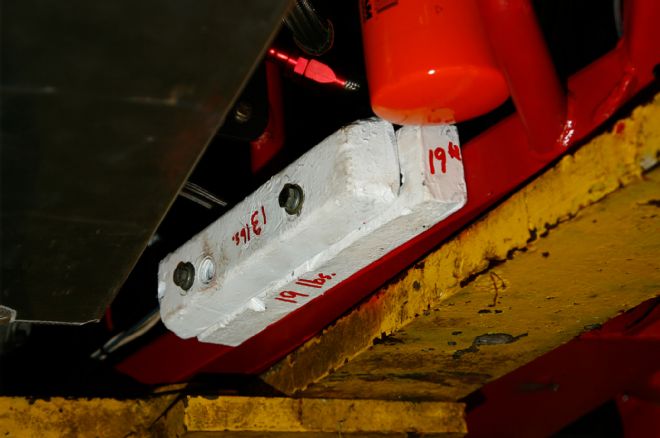 The way the series intends to equalize the competition between higher and lower power motors is to designate different weights for the cars. If you run more horsepower than the “standard,” then you will need to add weight. The exact amount you would add is determined by the exact power excess.
The way the series intends to equalize the competition between higher and lower power motors is to designate different weights for the cars. If you run more horsepower than the “standard,” then you will need to add weight. The exact amount you would add is determined by the exact power excess.